Getting and staying warm is often the crux of a winter backpacking adventure. Do it right and sleeping outside in the off-season can actually be enjoyable: A change of scenery spices up even your most familiar campsites, not to mention you have the option to mix in skiing and other winter sports into your overnight. But do it wrong and you’ll be miserable or unsafe. Keeping comfortable while winter camping is a practiced skill that can take a lot of trial and error, specialized gear, and long-perfected personal techniques, but a couple simple rules and an understanding of how we get cold can go a long way to making your winter excursions memorable (for the right reasons).
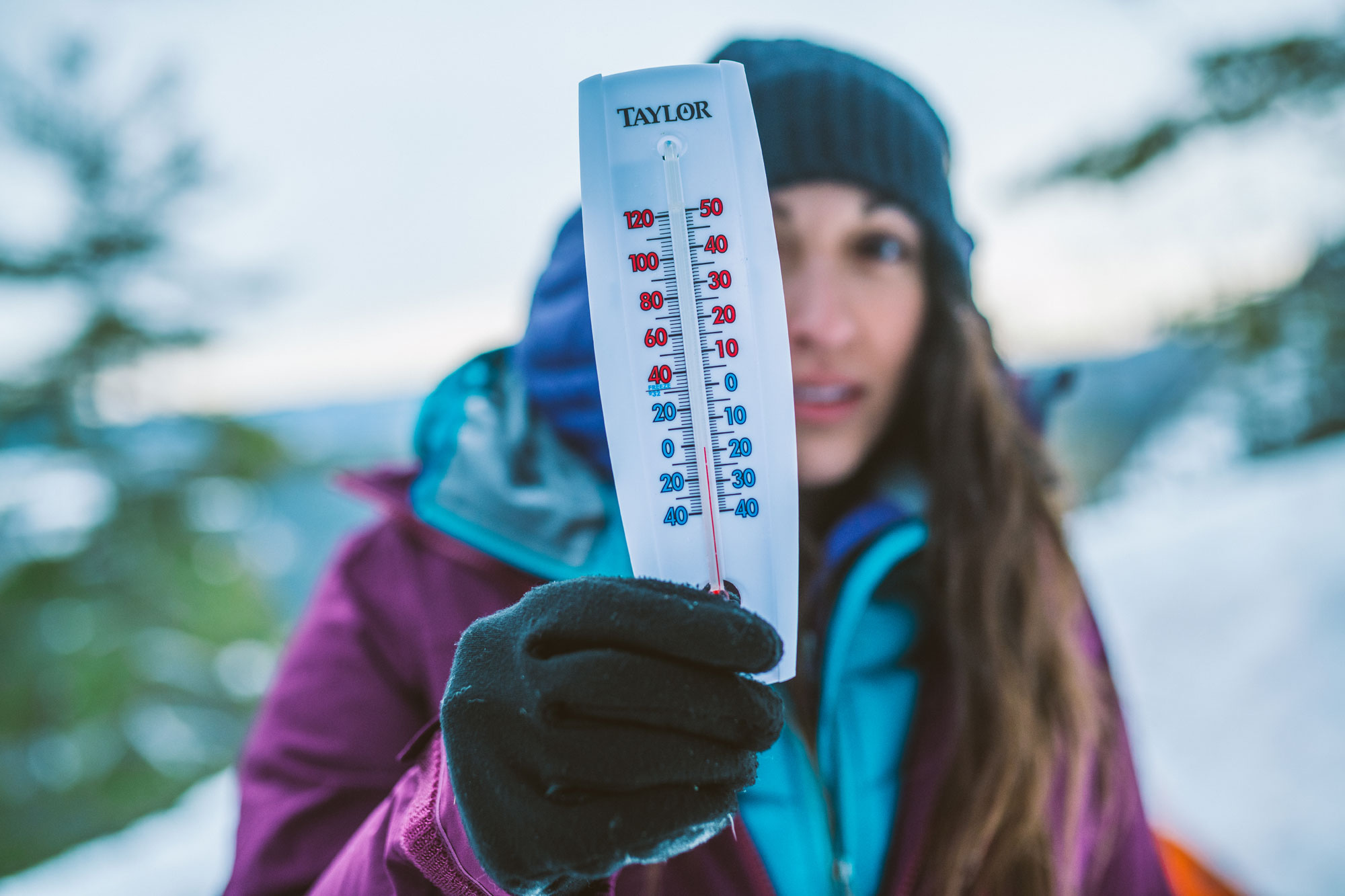
What makes you cold?
Understanding how to get and stay warm starts by understanding how we cool, and not all situations are alike. You probably learned a lot of these terms in science class, but how do they apply to adventuring outside?
Radiation: The ongoing transfer of heat from your body to its surroundings. The heat’s got to go somewhere, otherwise we’d cook ourselves! The colder the environment, the more quickly this effect takes place, or so physics would tell us.
Convection: The acceleration of radiation by wind. This is the culprit behind the idea of wind chill, as the moving air is stealing away our heat. The faster the wind, the greater the effect.
Conduction: The loss of heat through direct contact with cold objects. You notice very quickly which things are better conductors of heat when you touch a cold fuel bottle or a foam pad. The more effectively an object conducts heat, the faster it will draw heat from you.
Evaporation: We see this process everywhere: Things dry, and as they do they become cooler. Again, more physics at work here. This is the reason why we sweat (thermoregulation), and the reason why staying dry in the winter is critical for staying warm.
These mechanisms are always in motion in our everyday lives, whether we pay attention or not. When we transition to a backpacking environment, we tend to realize in painful clarity how our fur-less, (mostly) blubber-less, soft and delicate bodies are not adapted to living out in the cold and snow. The trick to surviving and enjoying your winter excursions is to get warm and to stay warm.

How to Get Warm
You can’t stay warm if you aren’t warm to begin with, so finding ways to heat yourself up is a critical place to start for winter camping.
Movement
The quickest way to get warm is to get moving. In order to do anything physically, we need to burn calories, and this burning of our body’s fuel can create massive warmth. Use caution though: Working too hard will make you sweaty (read: freezing as soon as you stop) and can exhaust you, which also works against your ability to stay warm.
Nutrition
The body is an incredible machine that turns food into energy, and subsequently, warmth. We are operating a biological furnace, and in order to keep the fire stoked we need to continually add fuel by consuming calories from food. Getting enough calories in the winter is a full time job, but it means you can eat all the comfort food that you keep yourself from eating the rest of the year (chili mac with a cheese spoon anyone?). There are helpful calculators to help determine how many calories you need to keep going in the winter, like this Basal Metabolic Rate (BMR) calculator. You can expect to take in more than twice your normal daily BMR for a successful winter camping mission, depending on how hard you’re working and how cold it is.
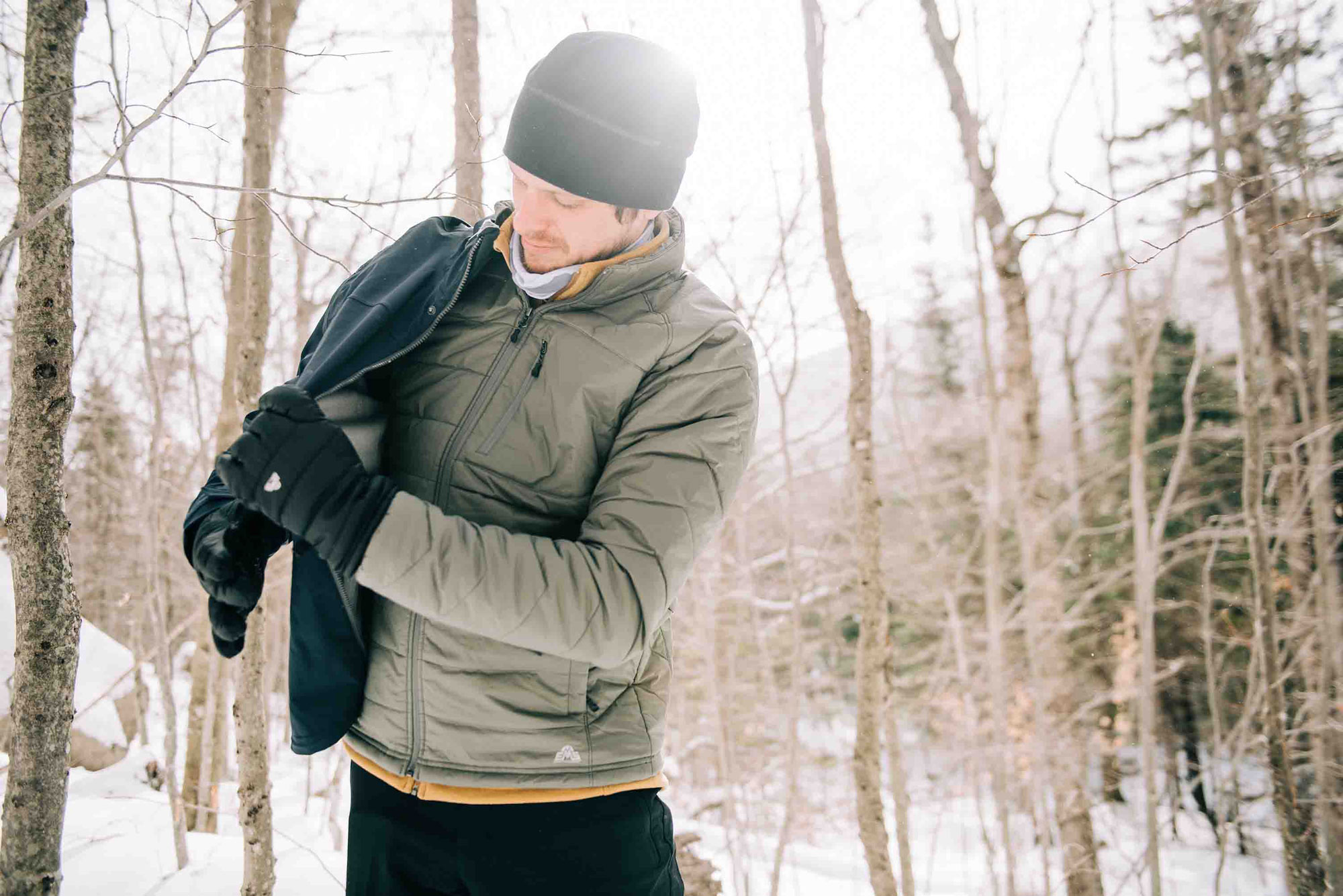
Enter the Macronutrient
The name may not be familiar, but we know these as carbohydrates, fats, and proteins, seen in bold print on your nutrition labels. Each are important to a healthy diet, especially for doing something active like backpacking. There is a lot of science behind the roles of these “macros,” but instead of going off the deep end we can over-simplify to focus on creating warmth. Largely speaking, protein doesn’t do a whole lot for warmth, although it plays an important role in muscle recovery. For carbs and fat, it can help to think of building a fire. You start with quick-burning kindling (carbs) to get started, then you can add larger sticks and logs (fat) to keep the fire burning hot.
Hydration
It can be difficult to motivate to drink enough when it’s cold outside, because your water is probably cold too, and it feels counterproductive to ingest more cold stuff. However, proper hydration is almost as important as adequate nutrition for keeping your body producing heat efficiently.
Artificial Heat
When your puffy jacket and peanut butter can’t get your temperature up, you may need artificial warming, including chemical warmers, your camp stove, and fire. These are indispensable resources for getting warm, especially when you no longer can on your own. Keep a few handwarmers “on-hand” and always bring materials with which you can start a fire in addition to your stove.
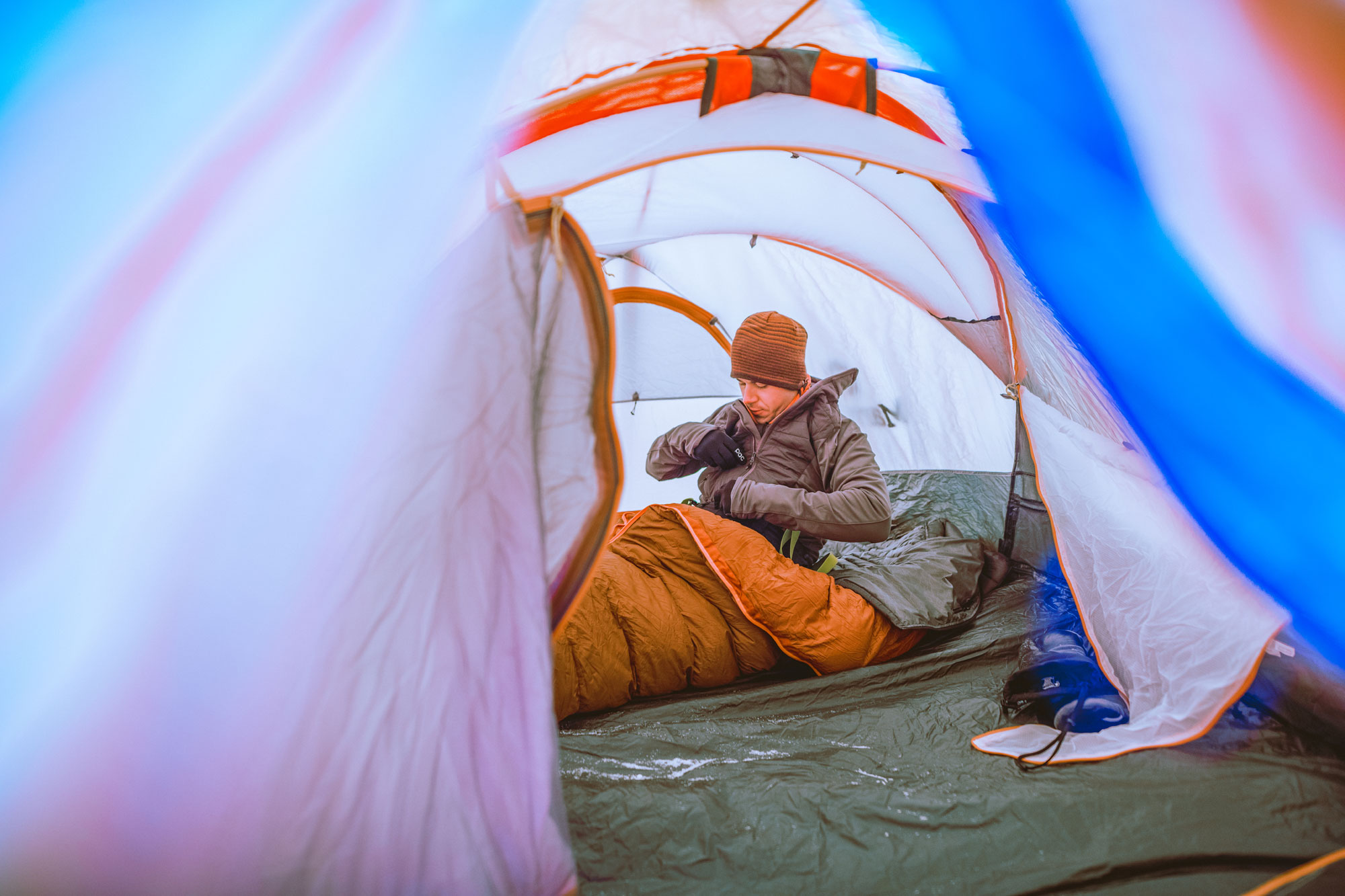
How to Stay Warm
Nights spent winter camping are long and cold. Once you’ve spent all day hiking and eating to get warm, holding onto that heat is critical to getting a good night’s sleep and staying comfortably safe as the temps dip even more after dark.
Clothing
The fundamental and often misunderstood role of clothing is not to make you warm, but instead to keep you warm. Clothing itself does nothing to produce heat (except for those fancy modern heated socks and gloves). The reason we can use layers of clothes to stay warm is because they trap warm air and prevent it from escaping, thus insulating us from those mechanisms of heat loss.
You can’t wear your warmest layers all the time, otherwise you’ll sweat through them and the trip will be over. Knowing how and when to use your layers is its own discussion entirely, but just remember when you’re moving and getting warm, you don’t need as many layers, and when you’re not moving it’s time to put on the layers to trap your heat.
A layering system is only as effective as the materials that make it up. There is no good reason to wear cotton in the winter (cotton kills, as they say), because once it gets wet it loses all insulating qualities, and takes forever to dry out. Be careful, as the same thing is true for down insulation, even though it it the most effective insulator by weight when it is dry.
A warm puffy jacket is great but you’ll still get cold if there are sneaky exposed areas elsewhere: your head, neck, wrists, and your plumber’s crack will all act as heat loss sinks. Make sure to cover up everything to keep a tight warmth seal, and tuck your shirts into your pants to avoid those nasty gusts.
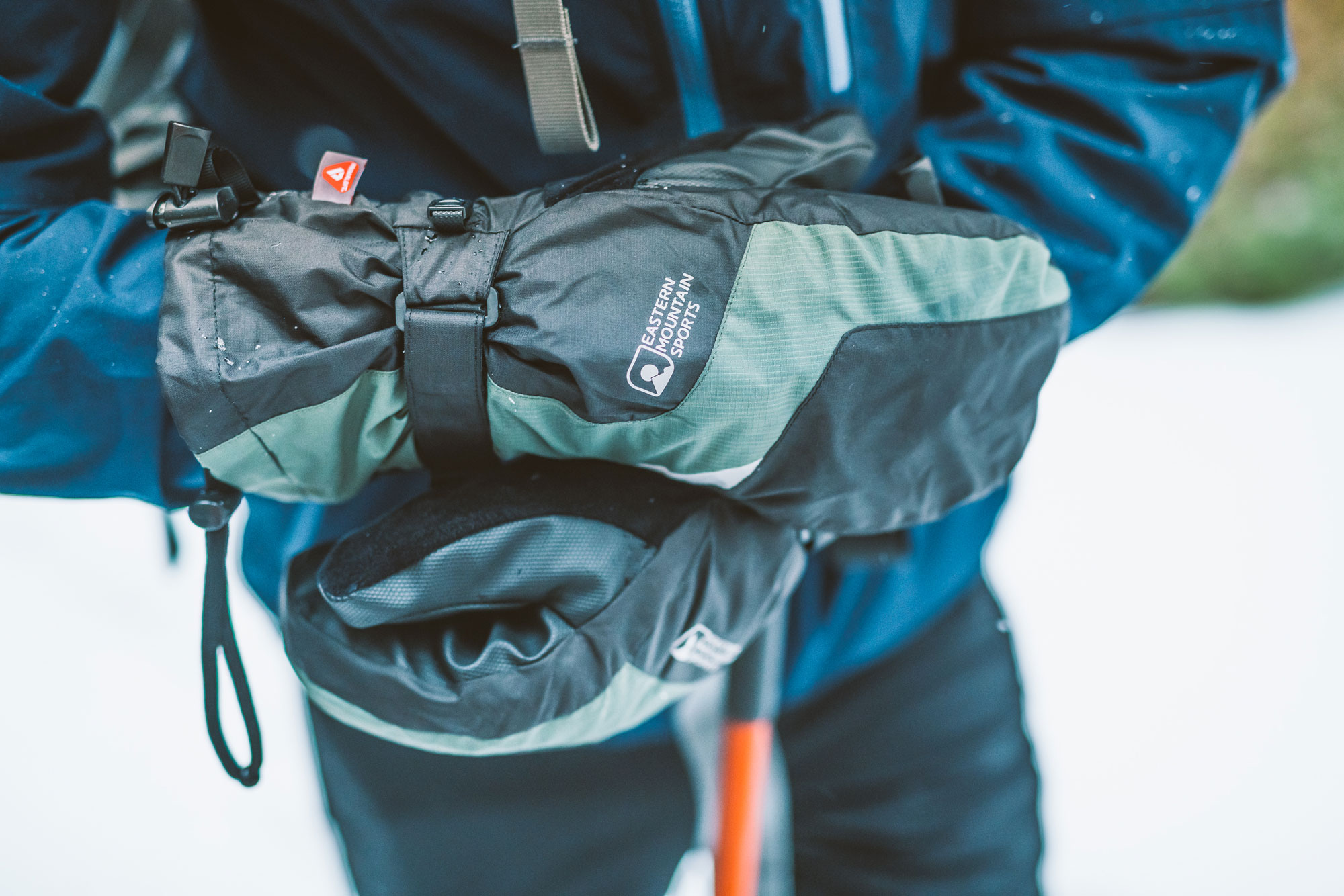
Footwear
You can have the highest-performing layers money can buy, and still end up cold if your footwear is lacking. Anyone who’s stood in the snow for any length of time will tell you how cold it is, and this is because of how quickly conduction works to move heat from your body into the ground. Using adequate boots, meaning insulated, supportive, water-resistant, and not too tight, is one of the most important practices for having an enjoyable backpacking trip in the winter.
Shelter
Now that you have good winter boots and warm clothing, you will probably need some sort of shelter to keep out of the weather overnight. Having a good shelter is yet another critical piece of the puzzle to staying warm while out for multiple days.
The ways that shelters help keep you warm are mainly these: They will trap radiative heat and allow the interior air space to stay warmer, and they will block wind and precipitation, keeping you dry and away from convective currents.
There are certainly many types of shelter out there, from the simple tarp to an expedition tent, bivouac bags to snow quinzhees, there is something for each winter outing. The trick is to learn what each option provides (or doesn’t) and understand what you need it to do for you while you’re out.
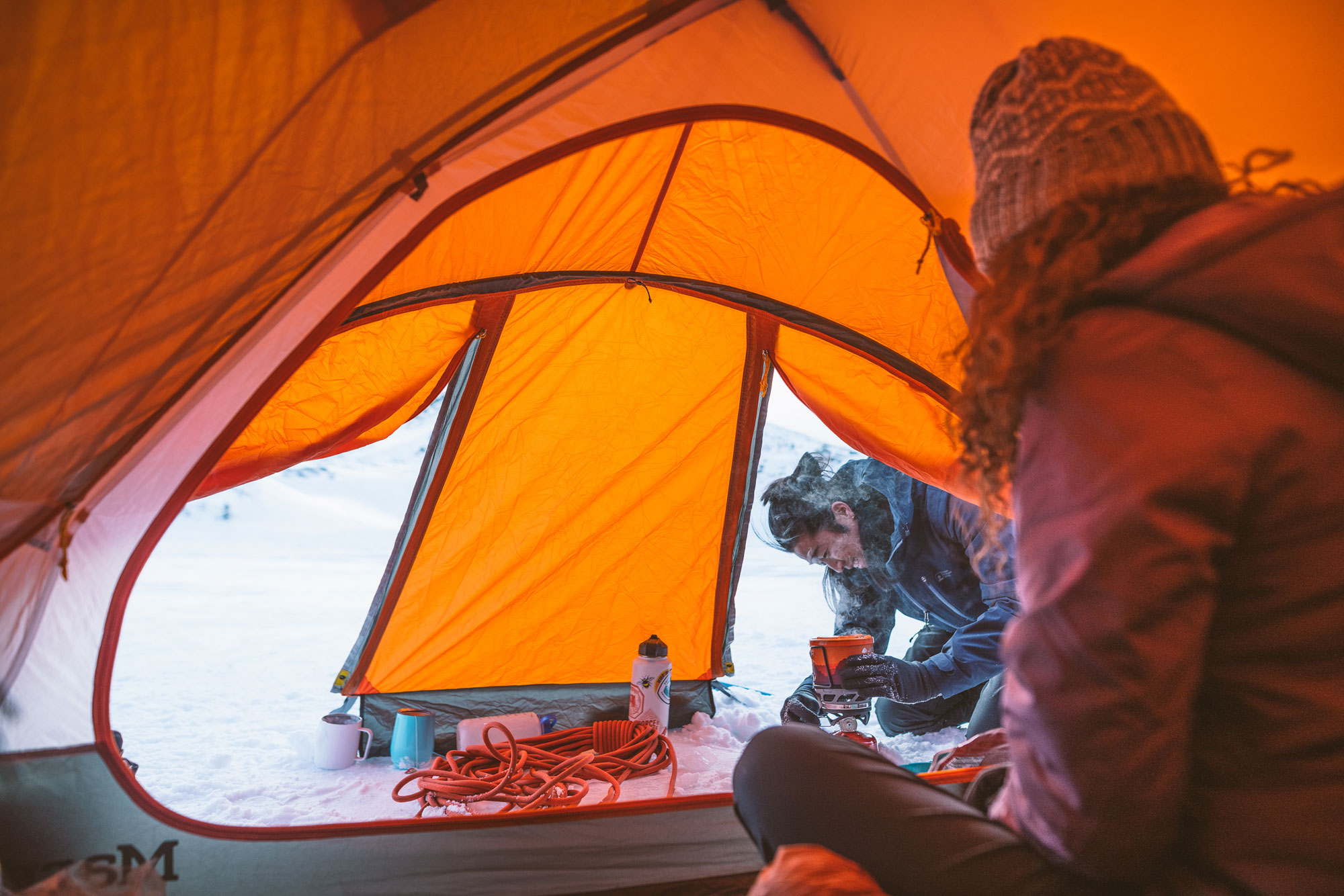
How to Sleep Warm
We spend a lot of time sleeping, and rest is important for success in the backcountry. If we can’t sleep well, then it’s hard to do anything. Sleeping warm is crucial for proper recovery, and while you may not sleep through the whole night, here are some tips to help maximize your Z’s:
- Start warm: As with clothing, a sleeping bag only insulates. When you first get in, do some sit-ups or leg raises to warm it up, and chuck a (tightly sealed) hot water bottle in there as well.
- Sleep with snacks: Fats, sugars, easy things that aren’t too messy. Make sure it’s something that won’t freeze solid. I keep a Snickers bar or two in my hat for a midnight pick-me-up.
- There are few things more pleasant than changing into dry “pajamas” for bedtime, especially the “vampire socks,” so called because they never leave the darkness of the sleeping bag. Bring enough layers to always have something dry to sleep in.
- As always, staying hydrated is paramount to an efficient metabolism. Keep taking in fluids, especially warm drinks or soup to get nice and toasty. But be mindful of the byproduct.
- I know it’s cold outside but you’re not going to sleep well if you hold it, I promise. If it’s too rugged outside to consider venturing out, become a pee-bottle practitioner (practice at home before you ruin your sleeping bag).
Sean Coit
Sean is a New Hampshire native who can be found looking for remote ski lines and climbing objectives when not working for the EMS Climbing School. Talking about gear makes up a large percentage of Sean’s conversations, and occasionally those ramblings will make their way into print.
Related Posts
April 2, 2024
10 Tips for Mountain Biking Etiquette During Mud Season
One rough spring could ruin the…




